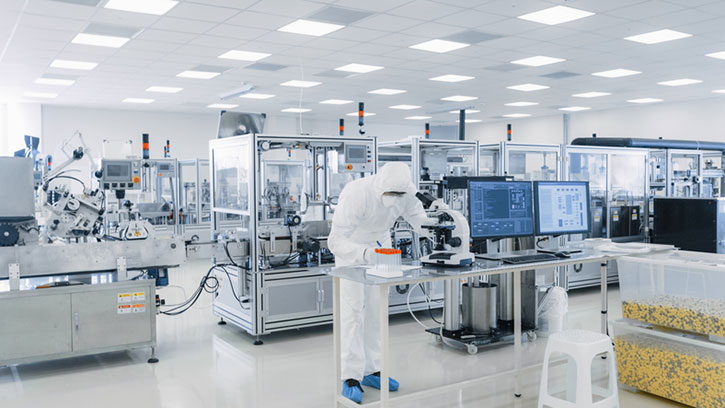Medical equipment sterilization
If you’re a germaphobe, you’ll want to know your dentist’s or doctor’s instruments are clean – especially knowing where they go in your body. Sterile instruments are vital to any healthcare facility’s function. Not only does the examination room need to be cleanly maintained, but the equipment the staff is using needs to be sterilized.
Hospitals, pharmaceutical companies, medical device companies, clinical labs, and even hair salons and tattoo parlors all have a critical obligation to maintain their spaces and equipment for their patients’ and customers’ safety. And maintaining means a lot more than a vacuum and a dusting. Equipment needs to be sterilized after each use. Doctors’ tools are used repeatedly, and you want them pristine before they go in your body.
Why Sterilize?
Both indoors and outdoors, microbes, viruses, and pathogens can pollute our surroundings, spreading infectious diseases in a variety of ways. At a healthcare facility, eliminating the spread of these parasites is essential. Whether it’s your dentist’s pick and mirror, your gynocologist’s speculum, or your surgeon’s scalpel, you are not looking to share these tools with the patient before you. The greatest risk of any instrument contacting a patient’s sterile tissue or mucous membranes is introducing pathogenic microbes that could cause infection.
In laboratories, effective sterilization techniques are crucial to achieve valid results. Failure to properly sterilize lab equipment can have severe consequences on the results of a test or experiment.
Benefits of Sterilizing Medical Equipment
- Decrease bioburden (the number of non-sterilized bacteria on a surface)
- Eliminate blood, pus, dirt, and foreign particles left between patients
- Prevent corrosion of precision tools with delicate parts
- Remove breeding ground for surviving germs
To reduce the spread of infection, germs need to be destroyed. Effective decontamination can ensure the safe use of all medical devices – invasive and non-invasive.
How to Sterilize
There are two common sterilization methods – physical and chemical. Mechanical cleaning can be achieved using a system like a washer-disinfector, ultrasonic cleaner, or washer sterilizer.
Physical Sterilization Techniques
- Heat
- Steam
- Plasmas
- Radiation (Gamma, ultraviolet, etc.)
Chemical Sterilization Techniques
- Ethylene Oxide
- Alcohol
- Glutaraldehyde
- Hydrogen Peroxide
- Chlorine & Chlorine Compounds
Sterilization systems are used in medical facilities as an effective means to clean needed instruments. Following CDC guidelines for instrument processing protocols, autoclaves, water processors and sterilizers quickly and thoroughly clean every tool in your facility.
Autoclaves can be found in hair salons, tattoo parlors, veterinarian offices, and dentist offices. They are a pressure chamber used to sterilize equipment with high temperature steam to kill germs. Once the tools are loaded into the autoclave, a vacuum pump removes all of the air from inside then pumped with high pressure steam at temperatures around 268-273 F for around 20 minutes. Once finished, the pressure and steam are exhausted and the door opens to cool and dry the instruments.
Another sterilization method is filtration. The tiny membrane pore size traps biological contaminants, including bacteria, mold and yeast. Using multiple filters of varying pore sizes can help separate multiple organisms, increasing the effectiveness of the system. A variety of filter media is available in a variety of materials like nylon and cellulose acetate. Each differing in their flow rate and presence of leachable materials.

Filtering a Sterilizer
In an autoclave, filters are used to both protect the environment from potentially dangerous gasses coming out of the system and also to protect the items inside from potential external contamination. Air filters block microorganisms from exhausting into the atmosphere. Sterilizers, like many pieces of equipment, require system cooling and ventilation to optimize efficient operation. Depending on the type of sterilizer, cooling air is necessary due to the heat generated through the sterilization process like steam or radiation. Meanwhile, like most connected equipment, sterilizers monitor the sterilization process and share the results through networking technology. Whether it’s cooling the heat generating components or circuit boards, clean air flow is critical for processing expediency, measurement accuracy, and seamless operation of all interconnected equipment. Universal Air Filter has a complete suite of air filtration solutions to provide basic dust arrestance or high efficiency particulate removal from the cooling air flow stream. Universal’s products have been used in a variety of medical device applications because Universal’s media options such as QuadrafoamTM and Hydrophobic Mesh can reduce dust, water mist and maximize air flow, while the air filter assembly can be made to fit any size opening and can even match industrial design aesthetics.
Universal’s design engineers are ready to assist with selecting the best air filter to meet UL industry requirements, product specifications, and help create 3D CAD models. Universal provides prototypes for evaluation and testing.
